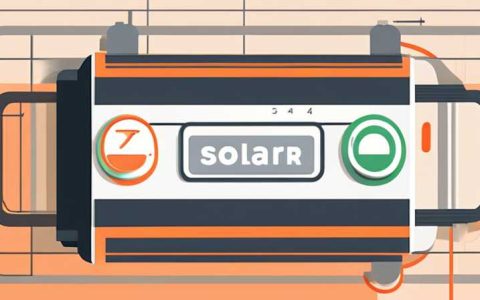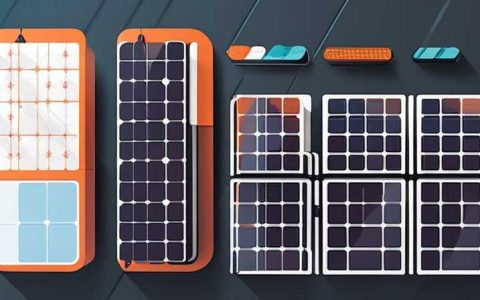
To effectively conceal solar energy systems on open-air balconies while maintaining their functionality and aesthetics, several strategies and methods can be implemented. 1. Utilize decorative screens or panels, 2. Employ planter boxes to integrate solar energy, 3. Opt for solar canopies or retractable awnings, 4. Select appropriate colors and materials to blend with surroundings. Among these techniques, decorative screens or panels serve a dual purpose by enhancing the visual appeal of the balcony while camouflaging the solar installation. These screens can be made from various materials, such as wood, metal, or vinyl, allowing for personalized design selection. When considering this method, incorporating artwork or greenery into the design can further reduce the solar system’s visibility while creating a pleasant atmosphere.
1. UNDERSTANDING THE IMPORTANCE OF SOLAR ENERGY USE
The utilization of solar energy has gained considerable traction in recent years, primarily due to rising energy costs and the urgent need for sustainable alternatives. Open-air balconies present a unique challenge and opportunity for integrating solar technologies—particularly in urban environments where space is limited. These balconies can harness solar radiation to generate electricity or hot water for residential purposes. The intrinsic value lies not only in the energy savings but also in reducing the carbon footprint associated with traditional energy sources.
Incorporating solar modules into balcony spaces aligns with broader initiatives aimed at promoting green energy solutions. As cities confront increasing energy demands and environmental concerns, integrating solar has emerged as a viable strategy. Individuals can generate their power, thus decreasing reliance on fossil fuels and mitigating the adverse effects of climate change. The flexibility that open-air balcony systems provide enables creative installations that enhance residential properties.
2. STRATEGIES FOR CONCEALING SOLAR SYSTEMS
When it comes to hiding solar panels on open-air balconies, various clever techniques can ensure they do not detract from the balcony’s aesthetics. Using decorative panels or screens fosters a seamless transition between the energy system and its surroundings. The panels can be designed with artistic components or natural motifs to resonate with the overall decor of the living space. By integrating screens effectively, individuals can align their solar energy usage with their design preferences, persuading even skeptical neighbors or homeowners’ associations.
Use of planter boxes can also serve to obscure solar systems on balconies effectively. By placing solar panels atop custom-designed planter boxes, residents can create an oasis that masks energy-generating modules beneath vibrant flowers and greenery. This method is particularly beneficial, as it not only camouflages the solar technology but also promotes biodiversity and contributes to improved air quality in urban environments. Such strategies illustrate how functional energy solutions can harmonize with aesthetic considerations.
3. ECO-FRIENDLY MATERIALS FOR BLENDING DESIGN
Selecting the appropriate materials and colors can transform the visual impact of solar energy systems on open-air balconies. Eco-friendly materials, such as bamboo or recycled metal, can be utilized to build concealing structures around the solar panels. These materials not only fulfill the purpose of hiding the panels but also promote sustainability through their low environmental impact. Furthermore, their natural textures and colors can seamlessly blend with the outdoor environment.
Colors play a pivotal role in how solar installations are perceived. Lighter shades can reflect sunlight, adding luminosity to an outdoor space, while darker tones may absorb heat, proving beneficial in cooler climates. When deciding on a palette, consider integrating elements that complement the existing color scheme of the building’s exterior. Additionally, applying cohesive color strategies ensures that the solar components do not disrupt the visual harmony of the balcony area.
4. INTEGRATING MULTIFUNCTIONAL DESIGNS
Creating a multifunctional space is an innovative approach to hiding solar energy systems on balconies. Retractable awnings or solar canopies can be installed over solar modules to provide shade while allowing sunlight exposure when needed. This strategy serves the dual purpose of generating energy while enhancing comfort in outdoor areas. A retractable system can ensure flexibility in managing light levels and solar gain while effectively obscuring the installed solar panels.
Moreover, employing furniture that cleverly integrates solar technology can further disguise energy systems. Custom furniture pieces, such as benches or tables fitted with solar panels, can reduce visual clutter on balconies that host solar modules. Such designs can facilitate the dual goals of style and sustainability, creating a visually pleasing and energy-efficient outdoor environment.
5. MAINTAINING FUNCTIONALITY AND AESTHETICS
While concealing solar systems is crucial, it is equally essential to ensure they maintain functionality and efficiency. Regular maintenance checks and cleaning are vital for maximizing energy output. If solar panels are covered or obscured, ensuring they receive adequate sunlight is critical to operational effectiveness. This demands a strategic approach to positioning and installing concealment structures without blocking solar access.
Investing in high-quality solar components is essential for longevity and performance. High-efficiency solar panels are less sensitive to shading and can operate optimally in partially obstructed spaces. Thus, effectively hiding solar systems becomes a balance between aesthetic considerations and technological capabilities. Thus, maintaining the integrity of solar energy production while offering visual appeal is an achievable goal for balcony homeowners.
6. THE FUTURE OF SOLAR ENERGY ON BALCONIES
As renewable energy technologies evolve, we can expect advancements that simplify integration and concealment strategies for solar systems on balconies. New design concepts that blend aesthetics with technology will likely emerge, enabling homeowners to embrace greener lifestyles without compromising on visual appeal. Innovations like building-integrated photovoltaics (BIPV) may pave the way for seamless energy systems that double as architectural features.
Emphasizing community engagement and collaboration will foster broader acceptance of solar energy solutions. As individuals share their experiences and successes in concealing solar installations, networks dedicated to eco-friendly living will strengthen. As technological advancements unfold, improved designs, materials, and methodologies for balancing functionality and aesthetics will increasingly benefit balcony spaces.
FREQUENTLY ASKED QUESTIONS
WHAT MATERIALS ARE BEST FOR DECORATIVE SCREENS?
When choosing materials for decorative screens intended to conceal solar panels, options such as wood, composite, or metal are among the most popular due to their durability and aesthetic versatility. Wood panels can provide a rustic appearance while allowing for air circulation. Treated varieties are resistant to rot and weathering, ensuring longevity. Composite materials combine the aesthetic of wood with the durability of plastics, making them ideal for outdoor settings prone to moisture. Metal options, such as wrought iron or aluminum, offer both strength and a modern look, with the additional benefit of being customizable in various finishes and patterns. These materials can be painted in shades that harmonize with the balcony’s existing decor for a cohesive appearance. Importantly, all choices should be lightweight and weather-resistant to withstand outdoor conditions while maintaining structural integrity over time.
CAN PLANTER BOXES REALLY OBSCURE SOLAR PANELS EFFECTIVELY?
Indeed, planter boxes can provide an effective solution for obscuring solar panels on balconies. When designed with sufficient height and strategically placed plants, they can shield solar installations from view while simultaneously enhancing the environmental appeal of the space. By selecting larger plants or using tiered planter boxes, homeowners can create layered visual barriers that distract from the solar equipment. Furthermore, incorporating a variety of plants can introduce varying heights and textures, adding depth to the outdoor area. Seasonal flowers or evergreen plants can adapt throughout the year, ensuring that the visual obfuscation remains effective across different seasons. Overall, this method not only camouflages solar installations but also contributes positively to the balcony’s ambiance and ecological benefits.
HOW CAN I ENSURE SOLAR PANELS RECEIVE ADEQUATE SUNLIGHT?
Ensuring solar panels receive the necessary sunlight while being concealed requires careful planning and assessment of their positioning. Individuals should evaluate the sun’s path throughout the day to identify optimal placement that minimizes shading. Utilizing tools like solar pathfinders can aid in determining sun exposure and potential obstacles. Additionally, the design of concealing structures must account for the angle of sunlight, ensuring that solar panels remain exposed during peak hours. Modular and adjustable concealments, such as retractable awnings or movable screens, can promote flexibility in managing sunlight access. Regular maintenance is essential; homeowners should routinely evaluate their balcony for overgrown plants or shifting furniture that might obstruct sunlight. Combining intelligent design, regular maintenance, and strategic planning can ensure maximum energy generation despite the concealment efforts.
FINAL THOUGHTS ON HIDING SOLAR ENERGY SYSTEMS
Concealing solar energy systems on open-air balconies requires an intricate balance of aesthetics and functionality. By implementing decorative screens, planter boxes, and eco-friendly materials, individuals can integrate solar technology into their living spaces without compromising visual appeal. Additionally, leveraging multifunctional designs that serve dual purposes can enhance outdoor experiences while promoting sustainability. With careful consideration of design strategies and ongoing maintenance, homeowners can conceal their solar installations while ensuring energy efficiency remains uncompromised.
The future of solar energy integration appears promising, with advancements that will make it increasingly feasible to blend energy solutions into urban architecture stylishly. With growing community awareness, sharing successful design experiences will also motivate more people towards adopting solar technology even in limited spaces. As society continues to prioritize sustainability and green practices, innovative solutions for incorporating solar energy systems into residential balconies will undoubtedly evolve, paving the way for a more energy-efficient future.
Original article by NenPower, If reposted, please credit the source: https://nenpower.com/blog/how-to-hide-solar-energy-on-open-air-balconies/










